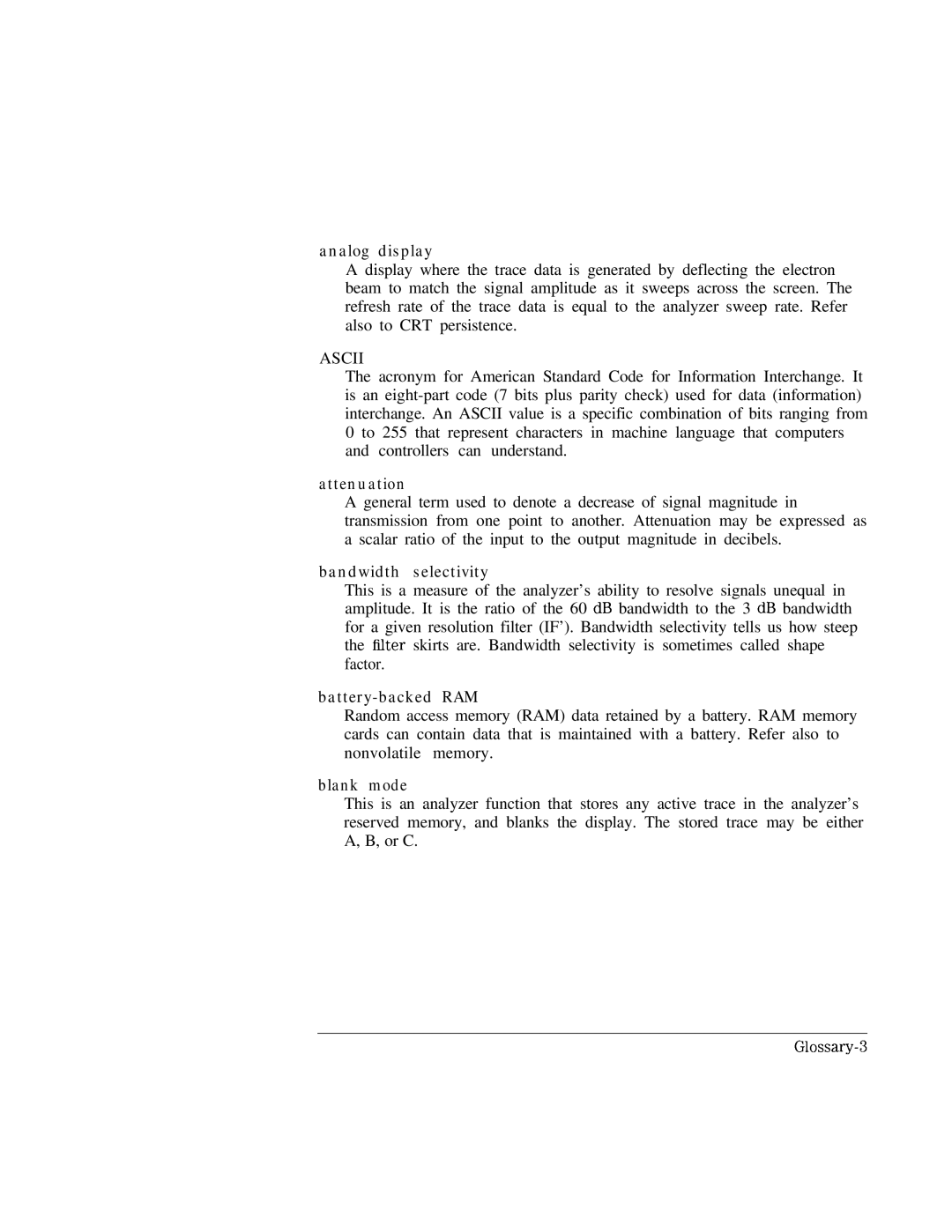
analog display
A display where the trace data is generated by deflecting the electron beam to match the signal amplitude as it sweeps across the screen. The refresh rate of the trace data is equal to the analyzer sweep rate. Refer also to CRT persistence.
ASCII
The acronym for American Standard Code for Information Interchange. It is an
attenuation
A general term used to denote a decrease of signal magnitude in transmission from one point to another. Attenuation may be expressed as a scalar ratio of the input to the output magnitude in decibels.
bandwidth selectivity
This is a measure of the analyzer’s ability to resolve signals unequal in amplitude. It is the ratio of the 60 dB bandwidth to the 3 dB bandwidth for a given resolution filter (IF’). Bandwidth selectivity tells us how steep the Iilter skirts are. Bandwidth selectivity is sometimes called shape factor.
Random access memory (RAM) data retained by a battery. RAM memory cards can contain data that is maintained with a battery. Refer also to nonvolatile memory.
blank mode
This is an analyzer function that stores any active trace in the analyzer’s reserved memory, and blanks the display. The stored trace may be either A, B, or C.
